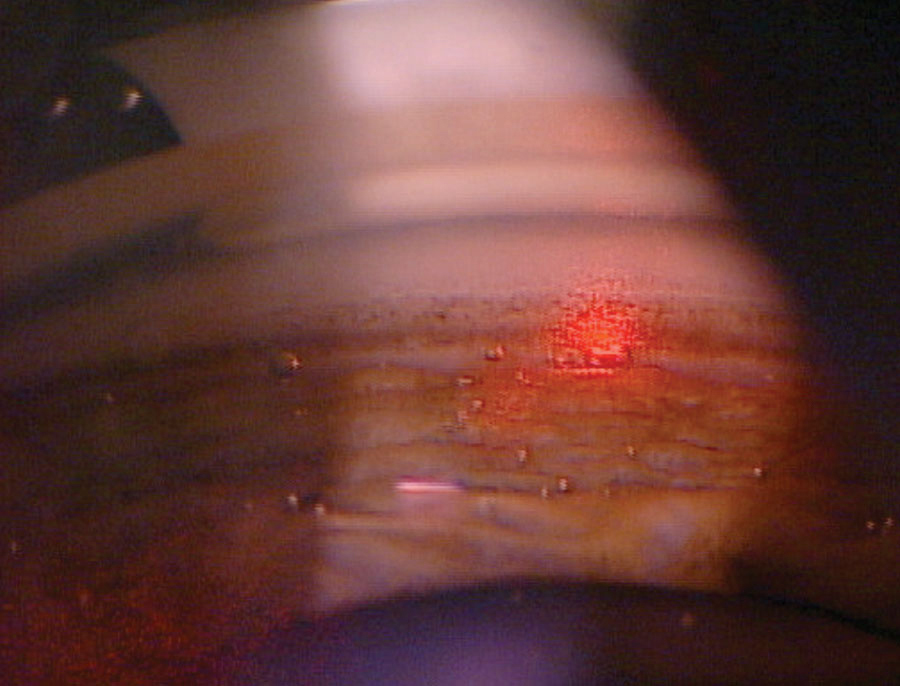 |
Although ophthalmologist-treated eyes had (non-significantly) better IOP reduction at 24 months post-SLT (mean difference -1.8mm Hg) and more stable IOP overall, they also had a greater proportion of eyes maintained on two or more drops (eyes on two and four drops increased from 25% to 33% and 3% to 6%, respectively). Photo: Nate Lighthizer, OD. Click image to enlarge. |
As scope of practice disputes in the United States tend to center on the question of whether or not optometrists can deliver office-based laser procedures at a level comparable to ophthalmologists, any insights into real-world outcomes can help clarify the matter.
An increasing number of hospital eye services in the UK have been training and commissioning optometrists to deliver selective laser trabeculectomy (SLT) treatments, which has led to interest in formalizing this practice with evidence-based guidelines on training, oversight and implementation. As optometrist-delivered SLT is already being used in the UK National Health Service (NHS), there is scope for a real-world evaluation of outcomes of this mode of care delivery to support changes in glaucoma service models.
Researchers recently evaluated the efficacy and safety of SLT delivered as part of routine clinical care in the UK, comparing optometrists with ophthalmologists, using routinely collected clinical data. They found that SLT can be safely and effectively delivered by trained optometrists with comparable efficacy and safety outcomes to ophthalmologists up to 24 months post-treatment.
The research team analyzed 207 eyes (131 patients), comparing 84 (56 patients) optometrist-treated eyes with 123 ophthalmologist-treated eyes (75 patients). Adults aged 40 and older who received first SLT treatment at three UK hospital eye units over a three-year period were evaluated at six-month intervals up to 24 months.
No statistically significant differences were found in change in visual acuity (VA), intraocular pressure (IOP) or glaucoma drops from pre-SLT baseline between optometrist- and ophthalmologist-treated eyes at all time points. More cataracts were detected in optometrist-treated eyes; however, this did not affect differences in VA or cataract surgery frequency. More optometrist-treated eyes underwent glaucoma surgery, but ophthalmologist-treated eyes had a higher drop burden and chance of composite treatment failure up to month 18.
“Optometrist-delivered SLT may be a viable model of shared-care service delivery, with comparable efficacy and safety outcomes up to 24 months post-SLT treatment, thereby facilitating delivery on the implementation of national guidance,” the researchers concluded. “Expanding the role of non-ophthalmologists to deliver first-line, evidence-based treatments, with appropriate training and oversight, may be a cost-effective and safe model to expand capacity within glaucoma services, ensuring patients are seen and treated in a timely fashion.”
| Click here for journal source. |
Lee CN, Delaney A, Richardson JAL, et al. Comparative outcomes of selective laser trabeculoplasty delivered by optometrists compared with ophthalmologists: a UK-based multicenter observational study. BMJ Open Ophthalmology 2024;9:e001870. |


